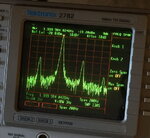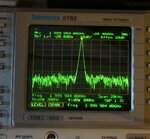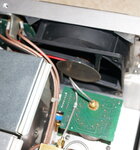hafrse
Full Member level 3
Hi,
Have purchased a used Anritsu 68347B signal genrator, watching a trace on my SA at for example 2Ghz with RBW 3 Hz , span 200 Hz, I can see adjacent spurior signals at about 50 hz spacing, but att RBW 300Hz looks ok.
Attached two pictures taken att diffenerent RBW:
One at RBW 3 Hz VBW 3hz span 200hz and
One at RBW 300Hz VBW 300Hz span 20Khz.
Is that within specifications or I have a problem with the signal generator ?
Thnaks
George
Have purchased a used Anritsu 68347B signal genrator, watching a trace on my SA at for example 2Ghz with RBW 3 Hz , span 200 Hz, I can see adjacent spurior signals at about 50 hz spacing, but att RBW 300Hz looks ok.
Attached two pictures taken att diffenerent RBW:
One at RBW 3 Hz VBW 3hz span 200hz and
One at RBW 300Hz VBW 300Hz span 20Khz.
Is that within specifications or I have a problem with the signal generator ?
Thnaks
George


